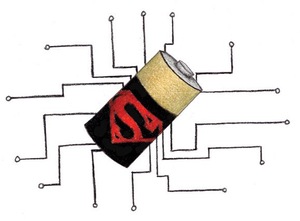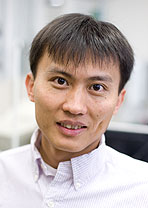 Simply put, improved battery life is the Holy Grail of consumer electronics. So far, advancement in battery technology for laptops, portable music players, digital cameras, and cell phones has been incremental and frustratingly slow.
Simply put, improved battery life is the Holy Grail of consumer electronics. So far, advancement in battery technology for laptops, portable music players, digital cameras, and cell phones has been incremental and frustratingly slow.
Stanford University researchers, however, recently announced in Nature Nanotechnology a discovery that using silicon nanowires to recharge lithium ion batteries may increase battery life by 10 times.
The benefit to us, users of consumer electronics from laptops to cell phones, is greatly increased battery life, something we’ve been wanting — but manufacturers have not been able to deliver — for a long time. In theory, using silicon nanowires to recharge lithium ion batteries may mean that a two hour laptop charge could last for 20 hours.
“It’s not a small improvement” said Yi Cui, an assistant professor in Stanford’s Department of Materials Science and Engineering, told CNet. “It’s a revolutionary development.”
 Cui explained to The Stanford Daily that a simple concept lies behind the discovery. (See also Stanford News Service account.)
Cui explained to The Stanford Daily that a simple concept lies behind the discovery. (See also Stanford News Service account.)
“How much energy a battery can store depends on how much lithium ions can be stored,” Cui said. “The more lithium ions, the higher the battery power. Using silicon nanowires allows us to store more lithium ions without increasing the weight of the battery.”
Silicon has long been recognized as good, cheap material for batteries, but it has never been applied because it expands upon absorbing lithium. Cui’s idea was to use nanowires, which can take in a lot of lithium without breaking.
But before we jump up and down in celebration, let’s be clear: While extremely promising, using silicon nanowires to recharge lithium ion batteries is still in the lab with lots of work and obstacles ahead.
MIT’s Technology Review notes that the nanowire growth process that Cui uses is a high-temperature (600 to 900 degrees Celsius) process that could be costly to ramp up. Cui recognizes this, and he is “exploring another approach.”
Ohio State University chemist Yiying Wu, who also works on nanowire electrodes, and other material scientists caution that “additional advances will be required before lithium batteries with nanowire electrodes deliver major increases in performance, particularly for electric-vehicle batteries.”
Even so, interest in Cui’s discovery is drawing attention worldwide and he’s looking to start up a company or working with existing companies to push the technology into commercialization.
Seems everybody is still looking for the Holy Grail of battery technology.
Illustration credit: Becca Del Monte, The Stanford Daily
Photo credit: Yi, Stanford MSE
